- Home
- Lloyd Jones
A History of Silence Page 3
A History of Silence Read online
Page 3
For several weeks I mulled over going down to Christchurch to pitch in, but then I heard about a ‘student army of ten thousand’ conscripted over Facebook and felt discouraged. Ten thousand pairs of youthful hands, each with a spade to shovel up the silted streets and driveways. And there they appeared, onscreen and in newspaper photographs. They were magnificent. And I felt done out of a job.
Then I thought, I should go anyway. At the very least I could help pick up things that had been broken. Or maybe I could take a shovel down with me and join the student army, but the idea of a twenty-year-old on the end of a shovel held me back. My father, it occurred to me, had been about the same age as the students when he pedalled all the way up to Napier.
Within months of the Christchurch earthquake, the old buildings in the run-down and slightly louche but lively Cuba Street precinct around the shoe factory in Wellington were red-stickered—they had been judged unsafe to inhabit because their structural robustness fell below the required standard to survive a severe earthquake. House-buyers now avoided brick dwellings, and were anxious more than ever to know how well their prospective purchase would stand up to a Christchurch-sized quake in Wellington.
This transference of anxiety was understandable in a city repeatedly told that an earthquake of apocalyptic proportion is overdue. Since I was in primary school we have been in rehearsal. I remember in earthquake drill waiting for my imminent demise with breath held and eyes wide. I didn’t want to miss any of it, especially not the signal from the teacher that my world was about to change. At a clap of his hands we dropped beneath our desks. After one minute, which always felt longer, there was another clap of the hands and we climbed back up and glanced around at one another: happy survivors.
My anxieties prompted by the quake in Christchurch were old ones from another time and place.
And as emotion swept the country between those who had first-hand experience of the event and those of us who might be described as witnesses, we found ourselves in an overlapping realm similar to the effect geologists describe as an echoing between soft and hard surfaces.
I decided to go to Christchurch five weeks after the quake.
Like William Hodges glimpsing the staggering sight of the icebergs at latitudes further south than Cook had ever sailed before, I was drawn and compelled by a sense of awe—in my case, however, for the scenes of devastation.
I had flown into Christchurch airport many times before, and usually went directly to a hotel in the city. I never bothered to look out the side window, at least not until the taxi joined the traffic on the sweep around Hagley Park, and then I would sit up and look properly at the enormous oak trees and the stately space they commanded.
This time was different. It was strangely, electrifyingly different. Within minutes of leaving the airport I saw a tank rumbling along Memorial Avenue. Its tall aerial radiated an urgency that made the houses it passed appear small and needy. And then the randomness of the violence became clear. On the approach to Hagley Park I saw trees stuck at odd angles, like arrows dropped out of the sky from an archer’s bow, and a vast armada of rescue and aid-worker tents and motor campers.
A short way on the traffic slowed; the road was ripped and torn, and through the open window I could smell the liquefied earth. Holes, subsidence everywhere. Rubble of every kind and so many surprising sights—the not quite right and at the same time not wholly inappropriate sight of the sky pouring in through the shattered roof of a church. Roads sagged and fell away into fissures and cracks. At the intersection of streets leading into the CBD, young faces belonging to Territorials turned away inquisitive motorists or those who had perhaps forgotten that the old route was no longer possible. And then the buildings, bits fallen off, windows broken, slippages. That world was more frail than anyone could have guessed, to the point where after several trips, it began to look fake, to feel as though everyone had been living in a theatre set.
As the partially destroyed buildings began to come down, the empty sites began to add up, and the edges of the city’s erasure spread. Out at Bottle Lake, a substitute city—of rubble—grew. Mountains of the city’s debris were being compressed down by graders that sat like toys on top of the heap of piled redundancy.
And then, like Hodges, I found myself seeking to overlay what I had seen with a story I’d heard.
The hairdresser was in her twenties. Her hair was red, I think, with a raccoon stripe of green. As she circled me with the clippers I had the impression of a small animal. Snip. Snip. She continued. Her aunt—snip, snip—had broken her leg a few weeks before the earthquake. And, she said, her leg was still in plaster when the quake lowered the corner of the house where the bathroom and toilet were situated. So, snip, snip, she could no longer use the loo. She said her aunt’s husband had cut a hole in the bottom of a beach chair and positioned it over a hole he dug in the backyard.
I was onto my third or fourth trip to the city, and I no longer paid attention to the world outside the taxi side window.
The driver kept looking in his rear mirror for me to instruct him. I waved him on past the Daily Donut with half its front fallen away and an oblong of sky where the door had flown out, past a massage parlour that was a pile of rubble with a flickering light next to a handwritten sign: Yes, we are still open. We moved on towards the spreading sky in the east to the suburbs badly affected by liquefaction—a likely address I thought to locate the hairdresser’s aunt’s story.
The taxi driver pulled over by a line of grungy shops. It seemed as good a place as any.
I got out and began to walk, without any real sense of direction, except to take care where raw sewage ran across driveways. The same sights were repeated—abandonment, absences of every kind. Even in streets that did not appear to be badly damaged, new indignities had been invented. People had dug up their lawn to shit or if they had the stomach for it they shat into plastic bags which could be sealed with a twist and dumped in the shiny green human waste disposal units dotted along the streets.
I didn’t have a map with me, but much of the place I recognised from what I had seen on television—the silted footpaths, the slurry grey filth in the driveways, the hard-bitten lawns, the grim occupancy of council flats and state houses. Amazingly, the flowers kept growing despite all that had happened. A large Polynesian woman knelt on a lawn yakking into a mobile and pulling weeds with her free hand. Weeding seemed such an odd thing to do. I wanted to call out hello, to engage her, and say something. I wasn’t sure what, but I was thinking, ‘This is what people used to do.’ Now it seemed to be completely beside the point. The neighbouring houses were empty, and they shook as generators in the street roared to clear drains of sludge and diggers and graders dug and clawed at the road.
I carried on, looking for an address to place the hairdresser’s story. I walked in circles for several hours and eventually found myself at the waterfront, at New Brighton, and there on the esplanade I came upon an abandoned couch. An elderly woman had sat down on it to rest. A small dog sat by her feet. I studied this scene from the sandhills above the road until through the alchemy of imagination it turned into something else in my notebook. This account finds me dropping down from the sandhills and crossing the road to sit on the couch next to an enormously fat man. I decided to change the husband of the hairdresser’s aunt into a neighbour, an extremely obese fellow whose past as a thin man has been erased and overtaken by layers of flesh. In a city pole-axed by the quake a makeshift toilet will be regarded as a bouquet. At the hour of need the fat man will leave his house next door to the Polynesian woman I had seen weeding, and haul himself, huffing and puffing, into the army-patrolled area of New Brighton to steal a beach chair and then fashion it into a toilet for the hairdresser’s aunt.
I still have notes to that effect. In this account his conscience finds him a few days later wishing to make a reparation. The fat man rises every now and then from the couch to look up and down the street for the old woman with the dog from whom he stole or
borrowed the beach chair for a makeshift dunny. He sat down heavily. His breath was drawn up from a pit of broken timbers. His eyes followed his breath into his lungs. After a fourth or fifth breath his eyes began to move and notice things. I leant closer to hear the man speak. For he spoke in a whisper as though he was unused to being heard. When he stopped speaking he sat with his feet splayed and a hand on each thigh, with an inviolable sense of occupancy, like a hen sitting on its eggs.
I left the beach and retraced my way through the gardening woman’s neighbourhood. The windows jarred with late afternoon light. There were more trucks and graders shuffling and reversing. Their noise and the acrid smell of silt would pursue me all the way into sleep that night. But there, in the midst of it all, I saw the small rose garden, and the woman I’d seen labouring between aftershocks to cut stems and tend the beds. It was extraordinary enough for me to make a note. But the next day, the observation seemed flat and unexceptional. The touching part was this idea of gardening as an act of devotion. But that isn’t what I had written.
Still, just as the sight of one church or ruin can recall another, seeing that woman crouched before her flowerbed brought back the memory of another scratchy lawn towards the end of summer, of front windows filled with a blinding light that prevented the casual passer-by from seeing in. I was back in the street of my childhood, one not that dissimilar to the one where the woman was gardening, and filled with the same idleness.
I am trying to remember other events, sights, thoughts from that day spent in Christchurch’s eastern suburbs. The street I happened to be in was called Eureka Street, almost too corny to mention but I will because it is true. My search for a house in which to locate the hairdresser’s story was a kind of echo of Hodges’ vision with its imaginative element. I had carried the hairdresser’s story for the same reasons too—for perspective, to lend authority to that perspective, and to make what I had to say somehow truer.
I could feel my grip on the hairdresser’s story beginning to slip, and when I returned to the neighbourhood the next day I found myself looking wildly around for something to replace it, some other source of authority, and seeing the postie on his bike coming from the direction of the primary school, I crossed the road to intercept him.
The woman weeding looked up, and back over her shoulder. She must have been aware of me the whole time. A couple of birds looked down from the pylons. Orange feet, black feathers. I remember the same aspect from somewhere else, jammed up with concrete. The postie shuffled nearer on his bike.
It was five or six weeks after the February earthquake and the moment he’d been thrown from his bike was still fresh. And, as I thought at the time, he will never forget it. Perhaps this is why he was happy to talk. He was quick to say this wasn’t his chosen vocation. He’d downsized himself from a previous position in management—it was in some area that I didn’t quite catch. We looked to be of similar age. I wonder if that was what encouraged him. He was into his second week on the job when the quake struck, and in this same street. He paused, and we both looked up the street at the tan-coloured port hills. I imagine he had told this story many times. Certainly he had lived through it a thousand times.
He recounted slowly and with care the instant in which he was thrown off his bike to land on his arse on the pavement. As he looked up, the road rolled away from him. Some sort of subterranean snake-like force beneath the bitumen undulating into the distance. Almost in the same moment the same stretch of road sank beneath filthy, greyish, swamp-smelling water. That’s when he heard the pinging. He looked up to see the last of the overhead powerlines snap, and as they brushed the swamp water that had risen with such surprising ease, the air turned electric blue. I asked a few questions, then some more. He repeated what he had already told me, but I liked hearing it again. The first time it was such an extraordinary thing to hear that I had to concentrate on retaining what he said. He didn’t mind me taking notes. He didn’t ask why I did that. Two more birds had joined those on the pylons. The postie looked at me, with both hands on the handlebars now. But I couldn’t let him go just yet. There must be more. So I asked him to describe the effect of the powerlines brushing the water and he told me again how the air turned blue. At the next pause we stared at the nearest patch of road. It was grey, intact, a rebuttal of the dissolution of the world I had just heard depicted. The postie must have had a similar thought because he repeated the bit about the road rolling away from him and the sudden and spectacular eruption of the silted swamp water. He looked up at the powerlines. Two of the birds gazed inquiringly down at us.
Across the road the woman stood up and shouted at a small boy to get away from the sewage. The postie pushed his bike half a wheel on. I couldn’t think of another question. Then a white station wagon slowed down and stopped. A woman wound down the driver’s window and called out a forwarding address. The postie made a note of it, and the woman drove off. I thanked him and by the time I had crossed to the gardener’s side of the road I had let go of the fat man for good. He just floated away from my consciousness like a giant advertising blimp. I remember feeling curiously light and unburdened, as silly as a feather, because now I could stop my search for an address for him and for the aunt and abandon the notes I had taken down from his perspective.
One afternoon I found myself on Barbadoes Street, in the city, assessing the damage done to the Cathedral of the Blessed Sacrament. It was a ragged sight, and yet it retained patches of beauty. A cordon had been placed around it. So I walked up and down for different views. In the autumnal afternoon it lit up with the brave endeavour of a faded beauty. I counted twelve shipping containers placed on top of one another to provide a splint for its street-facing crumbling side to lean against, cushioned by hay bales. At the end of a crane, a platform supporting stonemasons dangled over the cathedral’s dome.
Stone by stone the basilica was being dismantled in order to be put back together again. Each stone was painted with a number and laid with care onto pallets spread over the ground at the back of the building.
In its retelling, the basilica would hold true. Presumably in time it would be as good as new, and it would be impossible to know what it had been through. It would give the sunny impression of being outside history.
While I stood at the cordon, people came and went. Cars pulled up. People jumped out with cameras. A woman threw breadcrumbs over the barrier for the pigeons who had made homes in the hay bales. I was aware of the activity, but more interested in the numbered stones, their carefully preserved sequence of place and belonging.
On repeat visits to Christchurch that winter, I always seemed to end up in Barbadoes Street. It was as though an undertow brought me back each time.
I kept thinking about those numbered stones, until some purpose began to take shape. I began to wonder if I might retrace and recover something of my own past, and reassemble it in the manner of the basilica. It was a matter of looking to see if any of the original building blocks remained, and where I might find them.
I looked at the blocks on the pallet and then at the holes they had been shaken out of. My thoughts shifted in their own surprising way, and for the first time in a long while I found myself thinking about the epilepsy of my youngest sister, Lorraine.
Her fits were shocking to witness—even the seventh and eighth time. The thrashing over the kitchen floor, the foaming at the mouth. The first time, I hid behind the washhouse door listening to her heels banging against the lino.
As with the first trip to the butcher’s, I was not mentally prepared. I was five or six years old, and the noise from the other side of the door was terrifying. The high whine of her voice was like a needle stuck on a vinyl record.
At last it stopped, and I peered around the door to find my sister sitting up, Mum crouched beside her. A ring of foam is around her mouth. She has a faraway look. She is not quite back from wherever she has been. I can tell by her eyes that she has no idea that she is dribbling. She would be horrified to know. She is
still drifting back into herself. It is a strange thing to witness, like seeing a flower unfurl on a time-release camera. I don’t think my mother is aware that I am there.
The fits tend to happen first thing in the morning. And because Lorraine has to set off for work at an early hour, I am usually still in bed when there is a knock on the door—the hour, of course, gives it away—and I hear the polite voice of a stranger.
She’s had another fit, this time at the railway station, and in the open door my sister’s head droops against the man’s coated shoulder.
After a cup of tea and some breakfast, my sister slowly pieces herself back together. She buttons up her coat and stands on the porch ready to begin all over again the journey to her job at a photograph-processing lab in the city.
A graph of seismic activity looks remarkably like a scan of the human brain when it experiences an epileptic fit. The steady cursive waves suddenly spike.
We never knew when it would strike. Something inhabiting her—an evil spirit as it was thought of in the dark ages—decides when it will erupt. My sister is buttering her toast. Mum is looking at her in a certain way, as though this exercise in control and normality is as much an abnormality, knowing that other defining moment is always there waiting to shake her apart.
The photograph on my desk in the shoe factory is of a country road near Christchurch ripped apart on 4 September 2010 along the Darfield fault line.
The tree in the photograph appears to be completely unmoved by the event. It retains with its single-mindedness a sovereign sense of occupancy in a world torn apart.
The photographer’s main interest, however, is in a small boy crouched by the violent crack in the road. It looks like a flesh wound made by a cutlass. The boy peers into the pits of the earth, while hanging onto his mother’s skirt. A young woman with the pained look of a teacher burst in on a classroom of trouble has rolled the front wheel of her bike to the edge of the abyss. I have an idea she is a teacher—the way she leans over her handlebars looking for something that she already knows. The same cannot be said of the boy. He has just grasped the startling reality of a world rolled on, and paper thin.

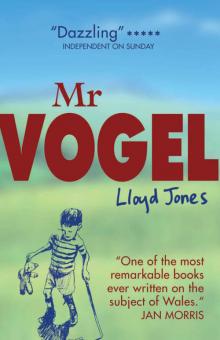 Mr Vogel
Mr Vogel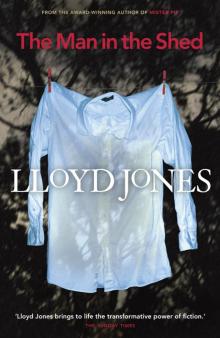 The Man in the Shed
The Man in the Shed Mister Pip
Mister Pip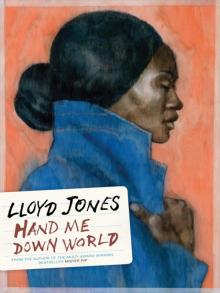 Hand Me Down World
Hand Me Down World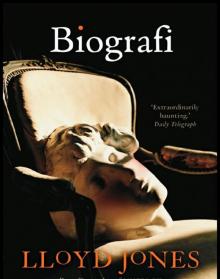 Biografi
Biografi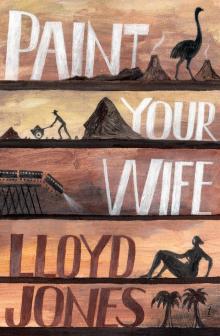 Paint Your Wife
Paint Your Wife Here at the End of the World We Learn to Dance
Here at the End of the World We Learn to Dance My First Colouring Book
My First Colouring Book Mr Cassini
Mr Cassini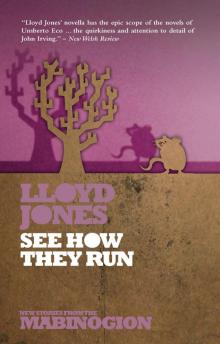 See How They Run
See How They Run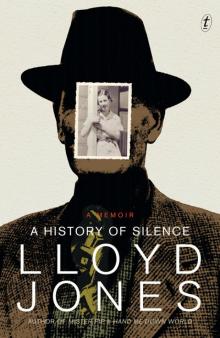 A History of Silence
A History of Silence The Book of Fame
The Book of Fame